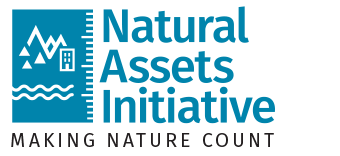Nature is Infrastructure: New Guidebook Bridges Gap in Infrastructure Planning
Much-Needed Guidance will Help Municipalities Develop Resilient Infrastructure Strategies
VICTORIA, BC, April 26, 2023 — On the heels of Earth Day, the Natural Assets Initiative (NAI) has released progressive guidance to help local governments plan with our most valuable but often overlooked assets in mind: nature.
Supported by the Greenbelt Foundation and the Municipal Finance Officers’ Association of Ontario (MFOA), Nature is Infrastructure: How to Include Natural Assets in Asset Management Plans outlines comprehensive best practices so that municipalities can effectively manage natural assets — such as forests, wetlands, and shorelines — and the critical infrastructure services they provide.
“Nature is a key ally in building resilience to climate impacts, which are already disrupting lives and economies,” says Roy Brooke, Executive Director at NAI. “As development pressures, as well as heat, drought, and other extreme weather events pose increasing challenges to Canada’s ageing infrastructure, it is vital that we build investment plans that ensure natural assets can keep providing core services today and into the future.”
Asset management plans are long-term investment plans for balancing the costs and risks to infrastructure with needed services in a given community and allow municipalities to prepare for future replacement and maintenance costs.
As Colin Macdonald, Manager of Policy at MFOA, explains: “MFOA has worked closely with municipalities in Ontario to adopt asset management practices to maximize the public benefit of their grey infrastructure with the finite resources available to them. We hope this guidance addresses a gap in current municipal asset management practices, so communities can apply similar concepts to maximize the benefit of their natural environments.”
The Guidebook also provides specific details on how municipalities can navigate Ontario’s regulation O.Reg 588/17, which requires consideration of both human-made and natural assets as part of asset management planning. By aligning this guidance with the regulation, it is directly applicable to all 444 local governments in the province.
“We are pleased to support the creation of this guide as a timely resource for municipalities as they use nature-based solutions to support ever-increasing infrastructure needs,” said Ed McDonnell, CEO of the Greenbelt Foundation. “The Greenbelt continues to enable successful growth in Ontario by protecting critical natural and agricultural systems that contain the assets that our communities need to thrive.”
The publication comes at a crucial time as Canada juggles affordable housing needs with disaster recovery from 2023’s extreme weather events. Local governments own about 60% of the country’s public infrastructure, and there is growing recognition of how natural infrastructure can be a more cost-
effective and climate resilient solution compared to built infrastructure alone. Nature is Infrastructure helps to bridge this gap, particularly in smaller communities or those working within the confines of exceedingly tight municipal budgets who can maximize their already-existing natural assets.
By enhancing natural asset management practices and embracing natural infrastructure solutions, we can combat climate change and create a healthier, more prosperous Canada for generations to come.

